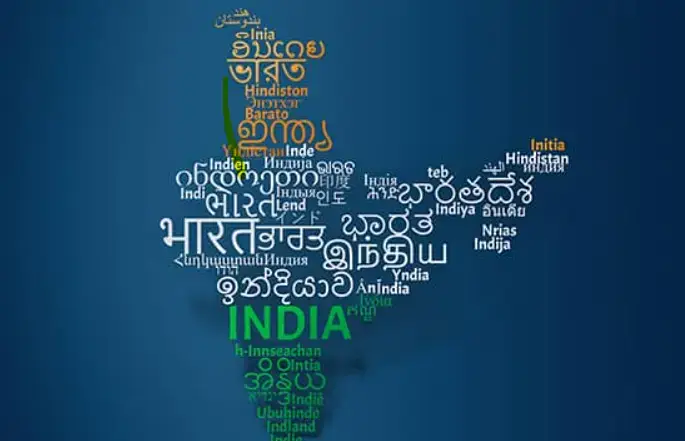India is a land of diverse cultures, rich history, and numerous languages, making it a vibrant and fascinating country. When traveling through India, you’ll encounter a multitude of languages and dialects. In this blog post, we will explore the diverse linguistic landscape of India, simplify the complexities, and provide you with useful insights into the languages spoken across this vast nation.
The Diversity of Indian Languages
India is home to 22 official languages, but the total number of languages spoken here reaches 121. Additionally, there are 270 mother tongues. This incredible variety makes India one of the most linguistically diverse countries in the world.
The Official Languages of India
The primary official language of India is Hindi, and English serves as the second official language. Despite this, there is no national language designated by the Constitution of India.
Hindi, a member of the Indo-Aryan language family, is the most spoken language in India. It’s spoken by around 366 million people worldwide. The Indo-Aryan language family is the largest in terms of speakers, followed by the Dravidian language family.
List of Indian Languages
The Indian Constitution recognizes the following 22 official languages:
- Assamese
- Bengali
- Bodo
- Dogri
- Gujarati
- Hindi
- Kannada
- Kashmiri
- Konkani
- Maithili
- Malayalam
- Manipuri (Meitei)
- Marathi
- Nepali
- Odia
- Punjabi
- Sanskrit
- Santali
- Sindhi
- Tamil
- Telugu
- Urdu
The numerous languages spoken in India belong to two primary language families: Indo-Aryan and Dravidian, showcasing the country’s remarkable linguistic diversity.
Indo-Aryan Languages
Spoken by more than 800 million people, Indo-Aryan languages are prevalent in northern, central, and some parts of western India. Some key languages in this family include:
- Hindi
- Bengali
- Punjabi
- Marathi
- Gujarati
Dravidian Languages
Dravidian languages are spoken by around 220 million people in southern and central India. The primary languages in this family are:
- Telugu
- Tamil
- Kannada
- Malayalam
Interesting Facts About Indian Languages
- With over 500 million native speakers, Hindi is one of the most widely spoken languages in the world, ranking among the top five languages in terms of the number of speakers.
- Bengali also ranks among the top spoken languages worldwide.
- India does not have a national language due to the immense diversity of languages spoken.
- Many English words have Indian origins, such as “avatar,” “jungle,” “shampoo,” and “chutney.”
- Telugu is known as the “Italian of the East” due to its melodic quality.
- The word “Hindi” comes from the Persian word “Hind,” meaning “land of the Indus River.”
- Sanskrit, Urdu, Nepali, Bengali, and Gujarati share similarities with Hindi in spoken or written forms.
- Malayalam is a palindrome, meaning it reads the same backward as forward.
The Role of English in India
English has a significant presence in India due to historical reasons. It was the official language during British rule and continued to be widely used after India gained independence. Today, India is the world’s second-largest English-speaking country, with over 1 billion people speaking the language. English is primarily used in business, education, and official documentation.
FAQs
How many languages are spoken in India?
India has 121 languages and 270 mother tongues. Acknowledging the country’s rich linguistic diversity, the Indian Constitution officially recognizes 22 languages, ensuring representation and support for a wide range of languages spoken across the nation.
What is the most spoken language in India?
Hindi is the most spoken language in India and belongs to the Indo-Aryan language family.
Is there a national language of India?
No, India does not have a national language as per its Constitution. Hindi and English are the official languages.
What are the major language families in India?
The major language families in India are the Indo-Aryan and Dravidian language families.
Why is English widely spoken in India?
English remains widely spoken in India due to its historical role as the official language during British rule and its continued use in business, education, and official documents.
